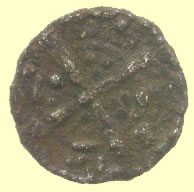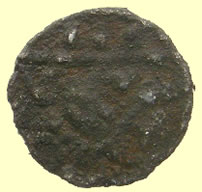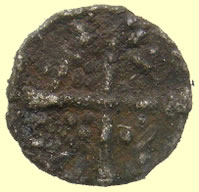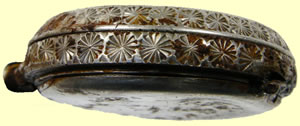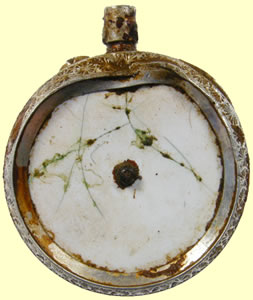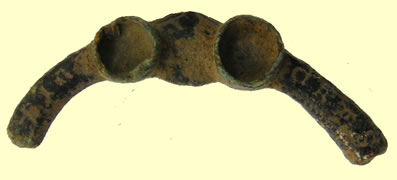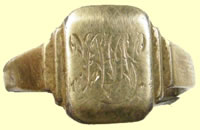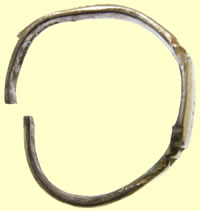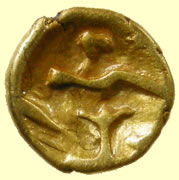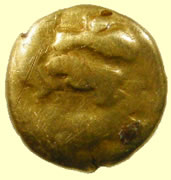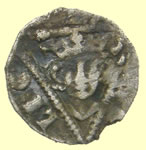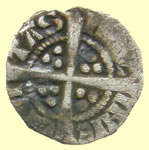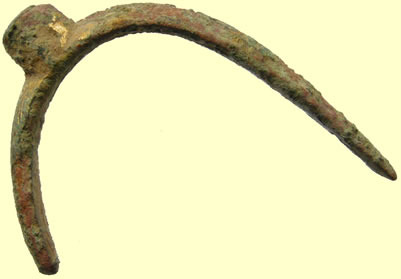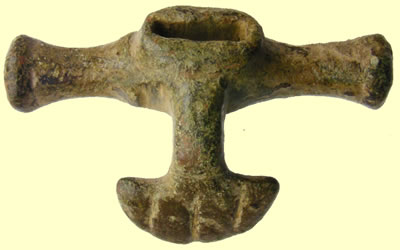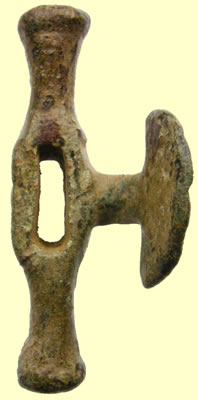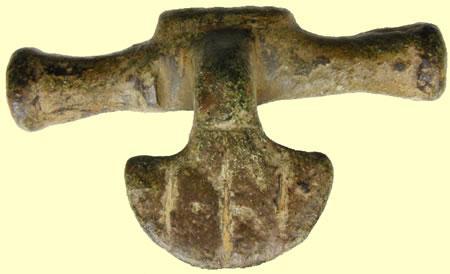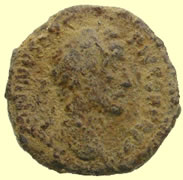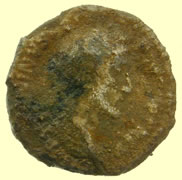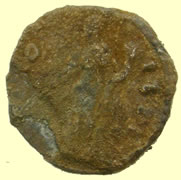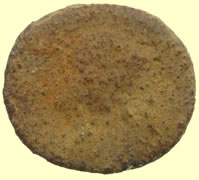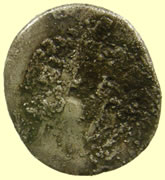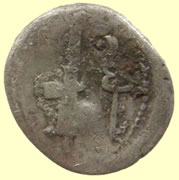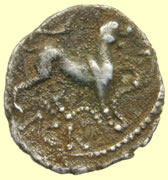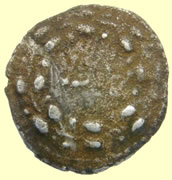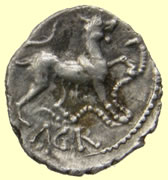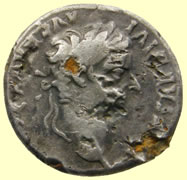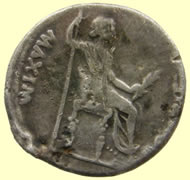

Metal detecting holidays in England with the World's most successful metal detecting club.
Twinned with Midwest Historical Research Society USA
2010 Nov finds page |
|||||||||
c 35 BC Dubnovellaunus tribe Celtic gold qtr stater-11.73mm,1.32g - Sent to CCI for recording Recorded as CCI 10.1046. Gold quarter stater of Dubnovellaunos, c. 20 BC-AD 10 Linear wreath, with opposed crescents; Horse left with branch below and trefoil design above VA 1660, BMC 2442 Around 25 provenanced examples of this type are known.... mainly from Essex or the Essex or Herts borders.
Ian
Ps. Note the figures for the British G quarter stater were also PROVENANCED examples only!
|
|||||||||
 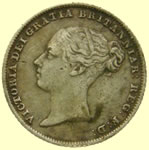 |
|
||||||||
1856 Victoria milled silver sixpence |
Saxon sceat sized silver coin - cross on obv - 'cooking' it to remove the crud 0.43g, 10.18mm dia ,1.08mm T |
||||||||
 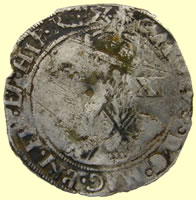 |
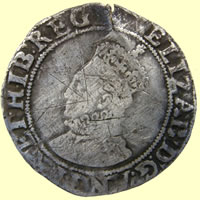  |
||||||||
1645-6 Charles 1st hammered silver shilling (12 pence) - Sun mintmark |
1594-6 Elizabeth 1st hammered silver shilling (12 pence) - Woolpack mintmark |
||||||||
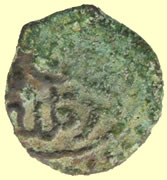 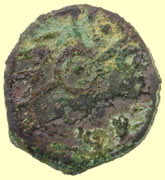 |
|||||||||
Facinating coin find - Slightly bigger than a Saxon sceat and has Saxon type markings - Sent off to Dr Martin at the Fitzwilliam musmeum Early medieval corpus for his views This is from the Indian sub-continent or south-east Asia. I am not an expert on this area unfortunately. You might contact one of the discussion groups on the Oriental Nummismatic Society website. Best wishes, Martin 12.44mm, 1.02g |
|||||||||
  |
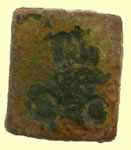  |
||||||||
1590-2 Elizabeth 1st hammered silver half groat (2 pence) - Hand mintmark |
18thC bullion weight - Lion mint mark |
||||||||
  |
  |
||||||||
1815 Russian lead bale seal |
1813 Russian lead bale seal |
||||||||
  |
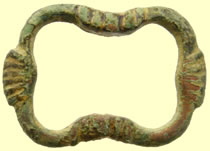 |
||||||||
1634 Charles 1st hammered copper farthing |
Georgian buckle |
||||||||
 |
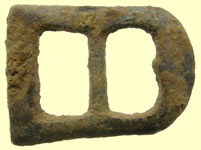 |
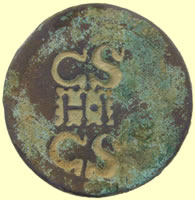 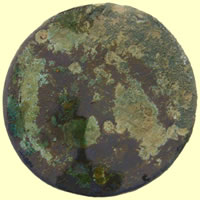 |
|||||||
33rd regiment of foot button Officer - 1848-1853 |
1550-1650 buckle |
1797 Cartwheel penny - overstamped love token |
|||||||
 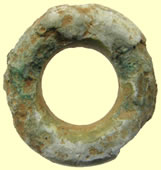 |
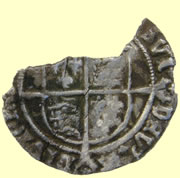 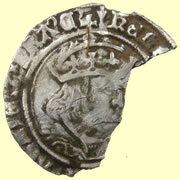 |
||||||||
Early BC Iron age harness ring |
1509 -26 Henry VIII hammered silver groat (4 pence) - Lis mintmark |
||||||||
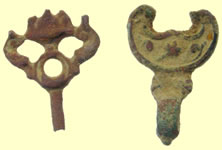 |
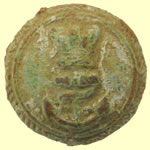 |
 |
|||||||
Georgian watch winders |
Royal Navy - Officers (Roped Rim) Lined Background - 1843-1891
|
18thC bell clapper |
|||||||
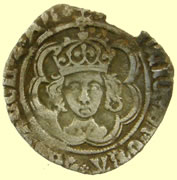  |
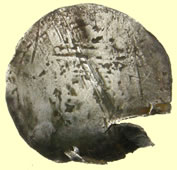  |
||||||||
1485-1509 Henry VII hammered silver half groat - double arched crown Rev CIVI/TAS/CAN/TOR - Canterbury mint |
James VI of Scotland 1601- 1604 hammered silver 1/4 Thistle Merk or half noble as it was sometimes known value 3 shillings and 4 pence ( 40 pence ) |
||||||||
 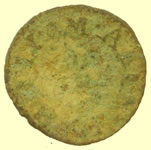 |
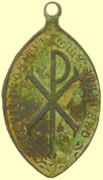 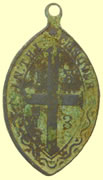 |
||||||||
17thC William Aldred of Colchester, Essex hammered copper trade farthing Norweb 1156 |
1873 dated religious medallion |
||||||||
 |
 |
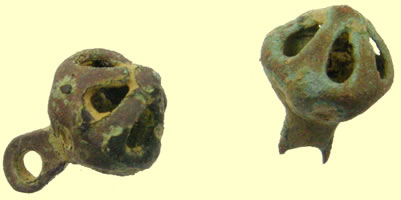 |
|||||||
Unrecorded 33rd regiment of foot button
|
RN Capt / Commander - 1825
RN Lieutenant - 1825 RN Midshipman - 1825 In use 1825 - 1827 |
16thC Tudor fretwork buttons |
|||||||
 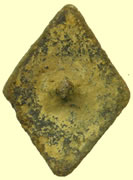 |
 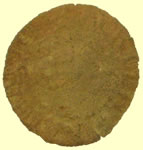 |
||||||||
Medieval mount |
17thC Nathaniel Backler of Dedham Essex hammered copper trade farthing Norweb 1254 |
||||||||
  |
 |
||||||||
17thC HL - East Bardgholt
(East Bergholt) Essex hammered copper trade farthing
- not in the Norweb ref book - working on it
|
WWII Royal artillery cap badge |
||||||||
  |
|||||||||
1762 George III milled gold 1/4 guinea - 5 shillings 3 pence
|
|||||||||
 |
 |
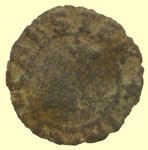 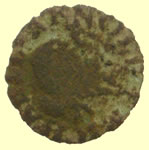 |
|||||||
RN Capt / Commander - 1825 RN Lieutenant - 1825 RN Midshipman - 1825 In use 1825 - 1827 |
1550 -1650 buckle |
17thC Colchester Essex hammered copper trade farthing |
|||||||
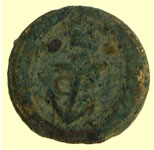 |
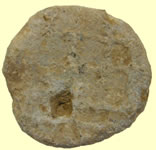 |
  |
|||||||
RN Capt / Commander - 1825 RN Lieutenant - 1825 RN Midshipman - 1825 In use 1825 - 1827 |
17thC lead token |
16thC Elizabeth 1st hammered silver shillinh fragment |
|||||||
 |
|
 |
|||||||
1550 -1650 buckle |
Georgian silver jewelry iten with glass stone |
Medieval bucket handle |
|||||||
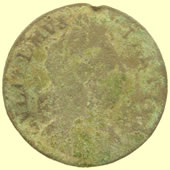 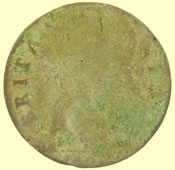 |
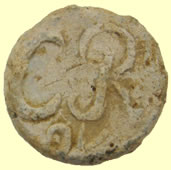 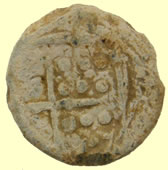 |
||||||||
1700 William III milled copper half penny |
17thC lead bale seal |
||||||||
|
|||||||||
Victorian silver pocket watch
|
|||||||||
 |
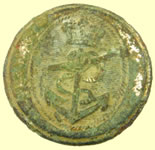 |
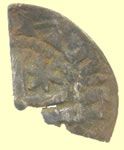  |
|||||||
1766-1780 THE 76th REGIMENT OF FOOT |
RN Capt / Commander - 1825 RN Lieutenant - 1825 RN Midshipman - 1825 In use 1825 - 1827 |
1165 AD William 1st of Scotland hammered silver half penny
|
|||||||
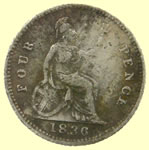  |
 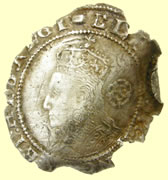 |
||||||||
1834 William IIII milled silver groat (4 pence) |
1594 Elizabeth 1st hammered silver sixpence |
||||||||
  |
 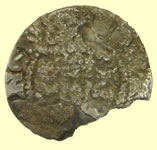 |
||||||||
1485-1509 Henry VII hammered silver penny - Brush hair |
Medieval hammered silver penny |
||||||||
  |
 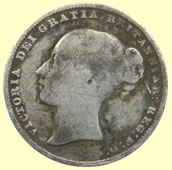 |
||||||||
1855 Victoria milled silver sixpence |
1861 Victoria milled silver shilling |
||||||||
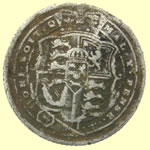 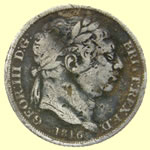 |
 |
 |
|||||||
1816 George III milled silver sixpence |
15thC lead token type 2 |
Gold plated ring |
|||||||
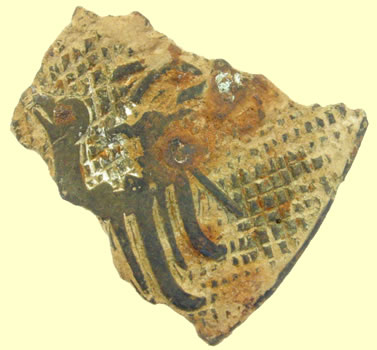  |
|||||||||
Huge fragment of a decorated circular disc - bird style reminds me of Saxon - one for the museum to date |
|||||||||
 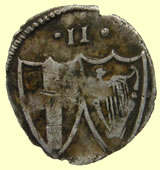 |
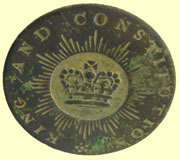 |
||||||||
1649 Commonwealth hammered silver half groat |
Stunning King and Constitution button military button ? |
||||||||
 |
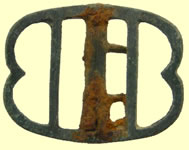 |
 |
|||||||
19thC livery button |
19thC buckle |
18thC toy cannon |
|||||||
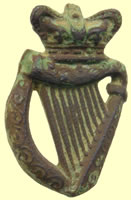 |
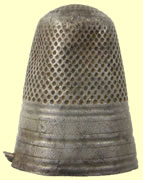 |
  |
|||||||
Victorian Royal Irish regiment cap badge |
Georgian silver thimble |
1562 Elizabeth 1st hammered silver sixpence |
|||||||
  |
 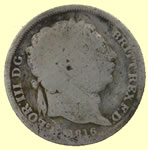 |
||||||||
Medieval lead pilgrims ampullae with flower pattern. East Anglia type many made at Walsingham
Pilgrim ampullae - holly water bottle made of lead 12th to 15thC, These ampoule were brought from pilgrimage places as a souvenir Mitchiner suggests that many ampullae were used in the annual springtime ’Blessing the Fields’ ceremony, in which the Holy Water they contained was sprinkled on the ground to give prayer for a good harvest. Having served this purpose, Mitchiner suggests that the ampullae were discarded. Others have suggested that the ampullae were buried along with their contents for a similar purpose
|
1816 George III milled silver sixpence |
||||||||
  |
 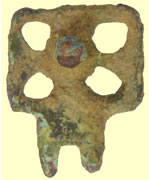 |
||||||||
Roman silver coin cut half - straight into the 'cooker' |
Medieval gilded harness pendant hanger - single rivet fixing |
||||||||
  |
  |
||||||||
1831 William IIII milled silver sixpence |
1906 Edward VII milled silver sixpence |
||||||||
 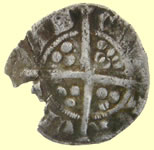 |
  |
||||||||
1341 Edward III hammered silver florin penny Obv EDWAR R ANGL DNS YB Rev CIVI/TAS/CAN/TOR Canterbury mint |
19thC St Christopher medallion |
||||||||
  |
 |
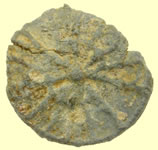 |
|||||||
1768 Ductch Zeelandia Province copper coin |
18thC clog fastener |
15thC lead token |
|||||||
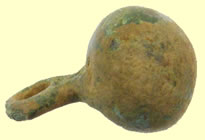 |
 |
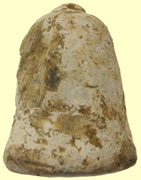 |
|
||||||
17thC button |
Georgian spur |
Medeival lead hanging weight |
Victorian brooch |
||||||
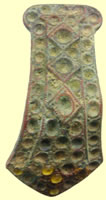 |
 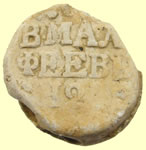 |
||||||||
17thC brooch with yellow glass stones |
1819 Russian lead bale seal |
||||||||
 |
 |
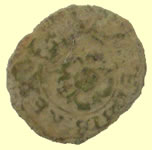  |
|||||||
19thC hunting button |
1634 Charles 1st hammered copper rose farthing |
||||||||
  |
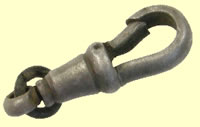 |
 |
|||||||
2ndC Roman fibular brooch |
Victorian silver clasp |
19thC hunting button |
|||||||
 |
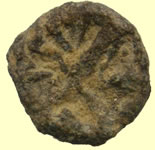 |
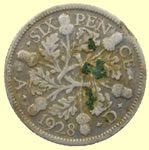 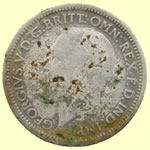 |
|||||||
15thC lead token |
1928 George V milled silver sixpence |
||||||||
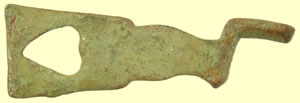 |
|
||||||||
17thC buckle clasp |
First 1550 -1650 buckle I have see with inscription - CRAS **** BIN It appears to have had two stones for decoration |
||||||||
  |
  |
||||||||
1927 George V milled silver sixpence |
1242-1247 Henry III hammered silver short cross penny - Class 8a- curuke shaped X London mint |
||||||||
  |
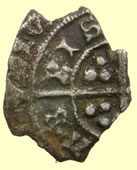  |
||||||||
1858 Victoria milled silver sixpence |
1471-1483 Edward IV hammered silver groat - 2nd reign, B on breast rev BBISTOW - Bristol mint |
||||||||
|
 |
 |
|||||||
Gilded Georgian brooch - red stone set in silver |
Unrecorded 5th Dragoon guards button - Crimea wars period |
19thC Essex regiment button |
|||||||
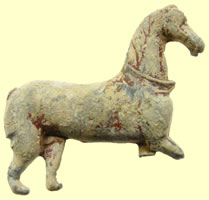 |
 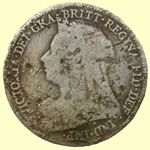 |
||||||||
Victorian lead toy horse |
1886 Victoria milled silver sixpence |
||||||||
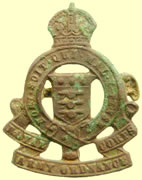 |
 |
 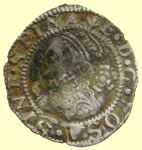 |
|||||||
1919-47 Royal Army ordnance corp |
General service headdress badge, Union of South Africa Army, 1909 - 1919
Springbock badge - union strength |
1561 Elizabeth 1st hammered silver penny |
|||||||
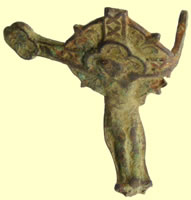 |
|
||||||||
Medeival style crucifix |
19thC Gold on silver signet ring |
||||||||
 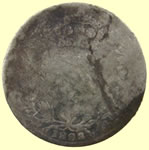 |
 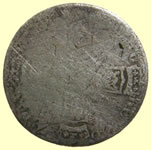 |
||||||||
1893 Victoria milled silver sixpence |
1696 William III milled silver sixpence
|
||||||||
70BC Morini Celtic 'boat tree' gold qtr stater - Sent to CCI for recording 1.41g, 10.81mm |
|||||||||
 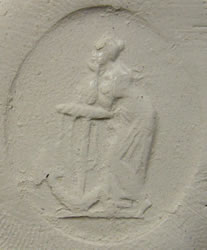 |
|||||||||
Stunning Georgian navy seal on red stone
|
|||||||||
  |
|||||||||
1865 Victorian milled gold 1/2 sovereign
|
|||||||||
 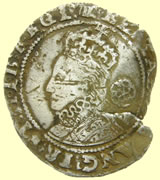 |
 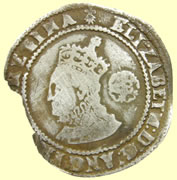 |
||||||||
1595 Elizabeth 1st hammered silver sixpence |
1572 Elizabeth 1st hammered silver sixpence |
||||||||
 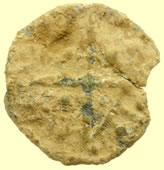 |
  |
||||||||
Medieval lead Boy Bishop token |
1500 -1700 Acorn mount |
||||||||
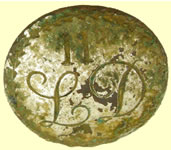 |
 |
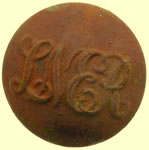 |
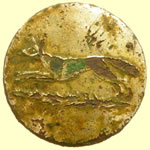 |
||||||
|
19thC North Eastern railways button |
19thC London and North East railways button |
19thC hunting button |
||||||
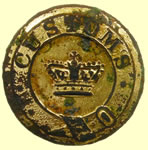 |
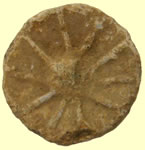 |
 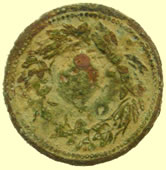 |
|||||||
19thC Customs button |
15thC lead token |
19thC USA One dollar Indian gold forgery ? |
|||||||
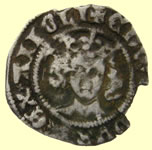  |
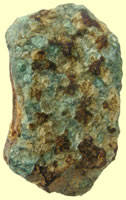   |
||||||||
1356 -1361 Edward III hammered silver penny - Cross 3 - 4th coinage Pre treaty period Series Ga - Double satire stops Obv EDWARDVS REX ANGLI Rare varity reads CIVI TAS LON DOM not LONDON Rev CIVI/TAS/LON/DOM - London mint
|
850BC Bronze age axe head fragment |
||||||||
 |
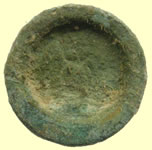 |
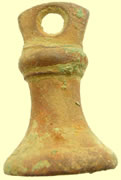 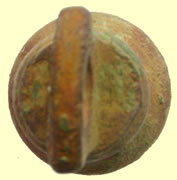 |
|||||||
18thC clog fastener |
Georgian trade weight |
Georgian bell trade weight |
|||||||
 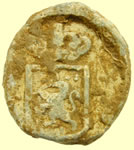 |
 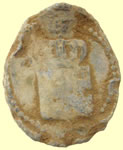 |
||||||||
Unusual dated 1620 Dutch lead bale seal |
17thC Dutch lead bale seal |
||||||||
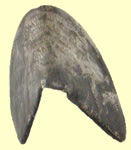 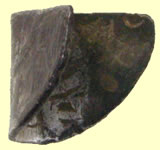 |
 |
 |
|||||||
Medieval hannered silver shot cross cut half penny Rev ***.ON.LVD - London mint |
Georgian lead tobacco jar lid handle |
1780 Royal Navy button |
|||||||
 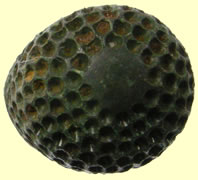 |
 |
||||||||
Medieval bronze beehive thimble |
1550 -1650 buckle |
||||||||
Monster find - 9th/10thC Saxon/Viking sword scabbard chape- gold on nickel This style better matches known Viking types so one for the museum to look at. 11.96g, 39.58mm L |
|||||||||
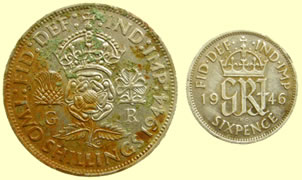 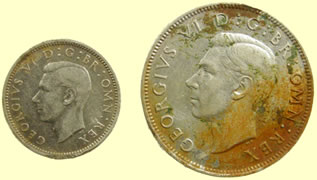 |
|||||||||
1944 George VI milled silver Florin (2 shillings, 24 pence) & 1946 George VI milled silver sixpence
|
|||||||||
 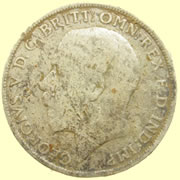 |
 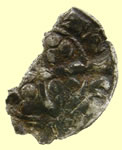 |
||||||||
1921 George V milled silver Florin (2 shillings, 24 pence) |
1274 Edward 1st (Ireland) hammered silver imitation penny Obv **ANGL DNS *** Rev **AS/ WA - Waterford (Ireland) mint |
||||||||
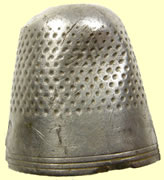 |
 |
 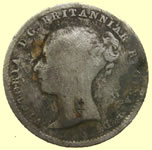 |
|||||||
Georgian silver thimble |
18thC crotal bell |
1840 Victoria milled silver 4 pence |
|||||||
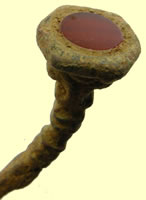 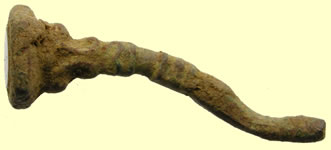 |
|||||||||
Neat Georgian spoon handle with red stone inlay
|
|||||||||
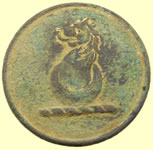 |
 |
 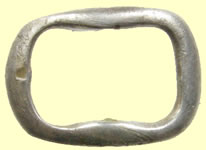 |
|||||||
19thC livery button |
1st Suffolk Yeomanry button
|
Georgian silver buckle |
|||||||
Great detail - Tiny mint condition Early issue 1280 -84 Irish Edward 1st hammered silver farthing 0.38g, 9.77mm dia Obv ERA NG LIE Rev CIVI TAS * DVBL INIE - Dublin mint |
|||||||||
 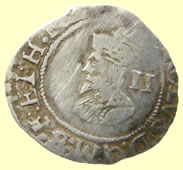 |
  |
||||||||
1625 Charles 1st hammered silver half groat (2 pence) |
1594-6 Elizabeth 1st hammered silver half groat |
||||||||
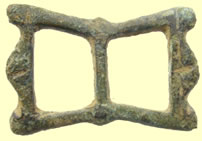 |
 |
 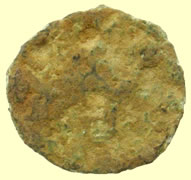 |
|||||||
1550 -1650 buckle |
19thC livery button |
1340 AD French Jetton Crown introduced in 1340 by Philip VI (1328-50) |
|||||||
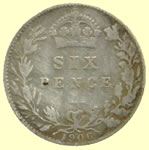 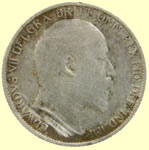 |
 |
||||||||
1906 Edward VII milled silver sixpence |
'3rd Essex Local Militia gilt (b/m: Charles Jennens. London). This is the 3rd Reg't of the Essex Local Militia. |
||||||||
|
|||||||||
Decorated gilt 17thC spur
|
|||||||||
61.54mm L x 35.8mm W, 54.89g Stunning early medieval dagger quillion - finger guard is decorated with a runic inscription I checked all the runic styles and it matches Norwegian the best - one for the museum Norwegian Futhark
Saxon
|
|||||||||
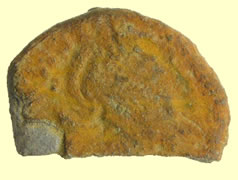 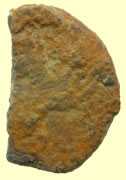 |
|
||||||||
Roman BC republican silver coin - cooking to remove crust |
Roman silver coin Antoninus Pius, 138-161 AD - cooking to remove crust |
||||||||
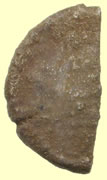 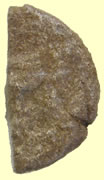 |
 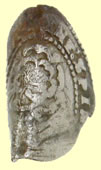 |
||||||||
Roman BC republican silver coin - cooking to remove crust |
1604 James 1st hammered silver half groat (2 pence) |
||||||||
  |
 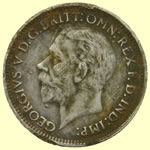 |
||||||||
1909 Edward VII milled silver sixpence |
1931 George V milled silver sixpence |
||||||||
 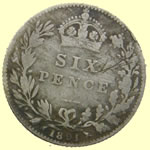 |
  |
||||||||
1891 Victoria milled silver sixpence |
1873 Victoria milled silver sixpence |
||||||||
 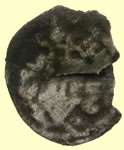 |
 |
||||||||
1485-1509 Henry VII hammered silver penny |
Essex Yeomanry The Essex Yeomanry was raised in 1797 during the Napoleonic Wars as a number of independent troops. The regiment was brought together as the "Essex Yeomanry Cavalry" in 1814. The regiment was disbanded in 1828, but with the expansion of the volunteer movement in the 1850s the regiment was re-raised as the "West Essex Yeomanry Cavalry" in 1857. The regiment was disbanded again in 1877, but an "Essex Troop" continued to serve under command of the "Loyal Suffolk Hussars". |
||||||||
|
|||||||||
Medieval lead bird feeder bowl
|
|||||||||
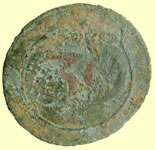 |
|||||||||
French 39th Regiment of line button French Order of Battle 39th Infantry Division: GdD Jean-Gabriel Marchand
|
|||||||||
 |
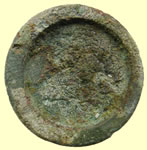 |
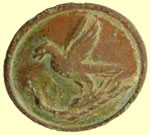 |
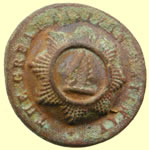 |
||||||
Victorian trade weight - Crown VR cipher |
Georgian trade weight - Crown GR cipher |
19thC livery button |
The Great Eastern railway button The Eastern Counties Railway opened in 1839. In 1862 it amalgamated with three other companies, to form the Great Eastern Railway |
||||||
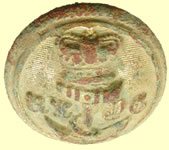 |
 |
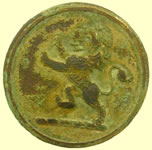 |
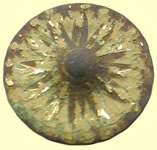 |
||||||
UNITED KINGDOM Royal London Yacht Club R. T. Y. C. - R. T. Y. C. London, England In use 1837 - 1901 |
19thC hunting button |
19thC livery button |
Georgian dandy button |
||||||
As dug
Partially 'cooked ' I'll need to see what's on the reverse (it's probably a "collection" of 3 or 4 objects, but I need to know which grouping it is in order to determine the exact type), however, speaking solely from what I can see on the obverse, I suspect this Republican Denarius is one of the varieties of C. Norbanus, c 83 BC., just a few years after the end of the "Social War".
Mark
|
|||||||||
Roman silver coin - straight into 'cooker' to remove horn crust Detail is coming through so sent off to Mark Lehman for his views - back in the 'cooker' to remove more of the crud |
|||||||||
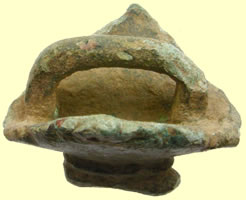 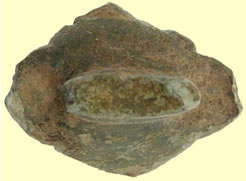 |
|||||||||
Roman (40-100 AD ) cast copper alloy skirted terret harness fitting
|
|||||||||
  |
 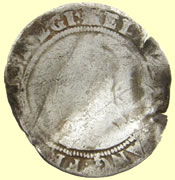 |
||||||||
1644 Charles 1st hammered silver sixpence - R in brackets mint mark |
1583 Elizabeth hammered silver sixpence |
||||||||
  |
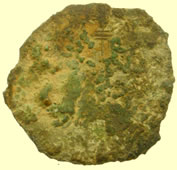 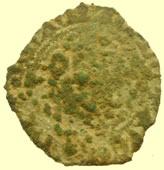 |
||||||||
1571 Elizabeth hammered silver three pence |
12thC Shield of France - French jetton |
||||||||
 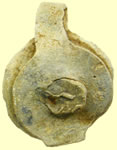 |
 |
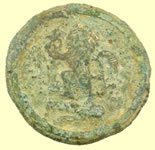 |
|||||||
Post medieval lead cloth seal |
Georgian button |
Honourable East India Company
|
|||||||
 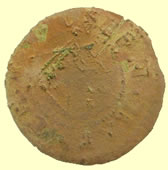 |
 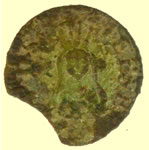 |
||||||||
1666 'His Half Peny' hammered copper trade half penny |
1653 Jeremy Erds of Manningtree Essex hammered copper trade farthing |
||||||||
|
|||||||||
Rare Roman silver coin - 'cooking' it to show detail 27 BC That is the Augustus, Gaius & Lucius denarius. Rather than sitting at table, Augustus' two grandsons are standing either side of a pile of arms, shields, etc, on the reverse. This is a rather common denarius of Augustus, but this one looks as though it had very little wear before deposition, so it might clean-up to be a really nice coin.
This is a not-so-pretty example I used to have in my collection http://www.stoa.org/gallery/album87/Caius_and_Lucius_Denarius which has all the specifics, date and reference already listed.
Revised ID after cleaning Mark
This one is still found under the same basic reference-type, still from the Lugdunum mint c. 2 BC - 4 AD., but it's a slighlty different variety. On the reverse of the "regular" one, the simpulum (the ladle) is on the left and the Lituus (crooked staff) on the right between the 2 spears. Yours has them reversed, and has an "X" in the field below them.
This changes the RIC listing to # 212 and the RSC listing to # 43d. The "frequency rating" in RIC is "Rare" for this variety as opposed to Common/Scarce for most of the other varieties.
Mark
|
|||||||||
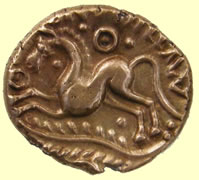 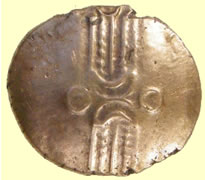 |
|||||||||
Eastern uninscribed Celtic gold full stater of Dubnovellaunos, c 20 BC Sent to CCI for recording 5.41g, 18.45mm |
|||||||||
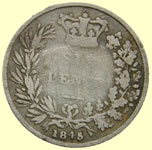  |
 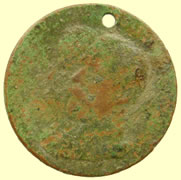 |
||||||||
1845 Victoria milled silver sixpence |
Neat medallion- Edward V ? |
||||||||
 |
 |
 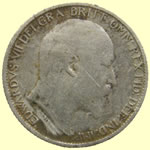 |
|||||||
15thC lead token - type 2 |
1550 -1650 buckle |
1906 Edward VII milled silver sixpence |
|||||||
 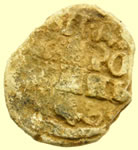 |
 |
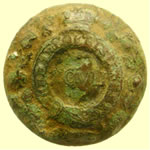 |
|||||||
1743 St Petersburg Russian lead bales seal |
Georgian watch winder |
XCVII regiment button The 97th (The Earl of Ulster's) Regiment of Foot was an infantry regiment of the British Army, formed in 1824 and amalgamated into The Queen's Own (Royal West Kent Regiment) in 1881. |
|||||||
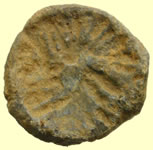 |
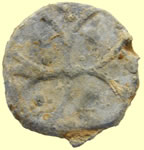 |
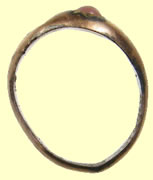  |
|||||||
15thC lead token |
15thC lead token |
20thC Gold ring with stone - marked 9 carat gold Maker JHW |
|||||||
As dug
Almost cleaned - still 'cooking' it |
|||||||||
South Eastern Celtic silver unit of Amminus circa 1stC - sent to CCI for recording 1.33g,1.5mm Adminius was probably the eldest son of Cunobelin, who was given the administration of Cantium by his father c.AD30. Inscribed coinage has been found throughout the canton, bearing the name AMM INVS, and a mint mark DVN, probably indicating an administrative centre at Durovernon Dvrovernvm Cantiacorvm (Canterbury, Kent)Native pre-Roman settlement on the Stour in East Kent, later cantonal capital served by a port three miles down the Stour at Fordwich. Amminus (Adminius) minted coin bearing a mint-mark of DVN, which is thought to be an abbreviation of Durovernon, with the implication that he had a mint here.
|
|||||||||
  |
 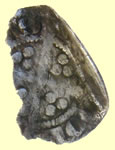 |
||||||||
1341 Edward III hammered silver florin penny - Cross 3 Obv EDWAR ANGL DNS HYB Rev CIVI/TAS/LON/DON |
1341 Edward III hammered silver florin penny - Cross 3 Obv EDWAR ANGL DNS HYB Rev CIVI/TAS/LON/DON |
||||||||
  |
 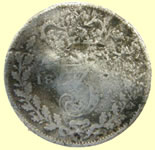 |
||||||||
Huge 1867 Repub. Peruana Lima 9 D Fino Y.B" and a crest milled silver coin |
1883 Victoria milled silver 3 pence |
||||||||
  |
 |
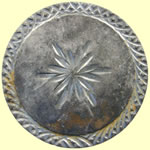 |
|||||||
1280 - 1286 Alexander III 2nd coinage Class 1 OBV ALEXANDER DEI GRA REV REX SCOTORUM - King of Scots |
|
Georgian button |
|||||||
 |
 |
  |
|||||||
Harwich football club |
16thC Tudor button |
1696 William III milled silver sixpence |
|||||||
|
|||||||||
Large AS sized Roman bronze coin - sent to Mark for ID You didn't give me a diameter or weight on this, but I can tell you a bit about it and I'll assume since you mention finding As-sized pieces that it's an As rather than a Sestertius (although there are similar types of Sestertii and Dupondii) .
I won't be able to date this piece exactly - however, if you can manage to read the final characters in the obverse legend - Roman Numerals - that would give us the TR P year and date the piece very closely. Unfortunately, although it has 3 dates, Tribunician year, Imperium number and Consular number, none of them are readable - the 2 on the reverse are probably beyond hope of reading, but the TR P date on the obverse might be readable in person.
It's Marcus Aurelius (161-180 AD) and the reverse type is FELICITAS AVG IMP (number?) COS ( number?) SC showing Felicitas standing left holding a caduceus and a short scepter. The obverse legend is very likely to be: M ANTONINVS AVG TR P (number?)
Examples exist between 171 (TRP XXVI) and 180 (TR P XXXIII) AD. I was unable to find an As with Felicitas left (although there is one with Felicitas right and this may be an unrecorded variant) I suspect it's a variant of RIC 1020, TR P XXVI since the rest of the Felicitas types with the correct obverse legend-type are sestertii.
So, I'll guess that this piece probably dates to 171 AD. unless you are able to give me a more accurate reading of the final characters in the obverse legend.
Mark
|
|||||||||
 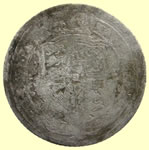 |
  |
||||||||
1817 George III milled silver sixpence |
Medeival bronze beehive thimble |
||||||||
Contemporary Roman silver forgery - sent to Mark Lehman for ID 1.99g, 17mm Yes, this does appear to be a "fourree" of a Tiberius denarius of the so-called "Tribute Penny" type. The forgeries from this era generally were the result of a higher level of more specialized work than are the contemporary copies of other eras. Beginning in the Republican era and up through at least the end of the 2nd century, these copies were created with copper cores with a heavy silver-foil wrapping soldered to the copper surface by the use of a eutectic flux layer and heating pre-strike. In the 3rd century, the lower fineness of "silver" led to copying by surface enrichiment techniques - then, when the Roman Empire itself had to resort to these same surface enrichment techniques, you tend to find the copies which make no effort to appear as anything but bronze or copper.
Tiberius, as I've no doubt told you before, was not a particularly original, energetic or engaged ruler. He was satisfied with, basically, a single type of denarius throughout his relatively long, 23-year rule from 14-37 AD. There are some vague date-ranges attached to the various levels of elaboration of the legs of the throne on which Livia is seated and/or the style of the protrait (looking more like Augustus at the beginning and more like himself at the end of Tiberius' reign). These would not be as helpful for specifically dating a fourree. You can probably say no more than that this dates to c. 15-40 AD.
Very nice and interesting find - possibly the electromotive potential between the copper core and the silver wrapping was responsible for this coin not becomeing encrusted like other silver pieces of the same age.
Mark
|
|||||||||
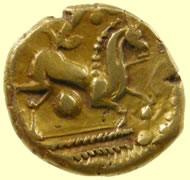 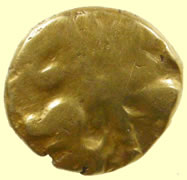 |
|||||||||
1stC BC Uninscribed 'L' 'Waddon Chase type' Celtic gold full stater - sent to CCI for recording 5,86g, 1.6mm 'These coins are probably not very much earlier than the Addedomaros staters - it all depends really on when one dates the Addedomaros issue. It seems fairly certain that the Whaddon Chase staters could be from the later stages of the Gallic War, say about 54 BC at the earliest; they could be a little bit later, but are unlikely to be after say 40 BC at the very latest.' Dr Philip de Jersey |
|||||||||
  |
|||||||||
This looks like a Tetrarchic era follis - c 294-315 AD. with major edge-chipping resulting in complete loss of legends, obverse & reverse. The reverse seems to be from the GENIO POPVLI ROMANI series which also included legends like GENIO CAESARIS and GENIO AVGVSTI along with a representation of the Genius of the Roman People standing left, sacrificing from a patera, often over a small altar at his feet, and holding a cornucopiae. Diocletian made a conscious effort to have as little distinction between his and his co-rulers' portraits - in order to try to avoid the cults of personality which had caused so much chaos in the later 3rd century - resulting in all the portraits from this era looking so much alike that there is no way to say who was supposed to be on the obverse. There's a fairly long list of possibilities including Diocletian, Maximian, Constantius I, Galerius, Maximian II, Severus II, Maxentius, Licinius I, and even Constantine the Great.
With the lunate "E" in the left field, the list of possibilities narrows down to Maximinus II, Galerius as Augustus, and Licinius I and the mints of Heraclea and Cyzicus, between 310-313 AD. The legend type most likely is GENIO AVGVSTI.
Mark
|
|||||||||
  |
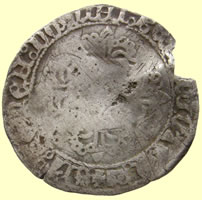  |
||||||||
1327 Edward III hammered silver penny Ov **** ANGL DNS HYB Rev CIVI/TAS/LOND/DON - London mint |
Huge 1475 Dutch -Karel de Stoute -hammered silver DOUBLE STUIVER
|
||||||||
  |
 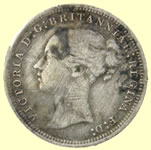 |
||||||||
1247 Henry III hammered silver voided half penny |
1867 Victoria milled silver 3 pence |
||||||||
 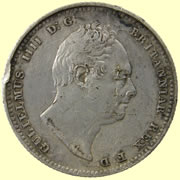 |
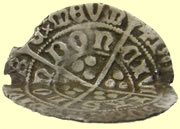  |
||||||||
1834 William IV milled silver shilling (12 pence) |
1471- 1483 Edward IV hammered silver groat (4 pence) - 2nd reign - Initial mark pierced cross Obv EDWARD DI GRA REX ANGL Z FRANC Rev CIVI/TAS/LOND/DON - London mint
|
||||||||
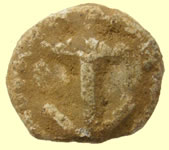 |
 |
 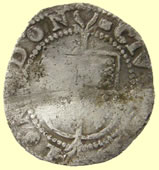 |
|||||||
17thC lead token |
18thC Royal navy silver button |
1594-6 Elizabeth 1st hammered silver half groat - Woolpack mintmark |
|||||||
 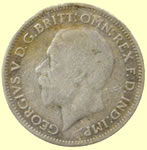 |
  |
||||||||
1934 George V milled silver sixpence |
2ndC Roman fibular brooch |
||||||||
  |
  |
||||||||
18thC bayonet frog |
1817 George III milled silver sixpence |
||||||||
  |
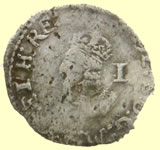  |
||||||||
1500-1700 mount |
1633-4 Charles 1st hammered silver penny- Portcullis mint mark |
||||||||
 |
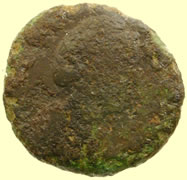 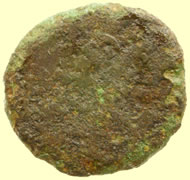 |
||||||||
Medieval chest key |
138-161AD Dupondius of Faustina II, wife of Marcus Aurelius bronze coin |
||||||||
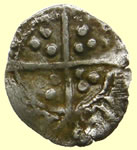 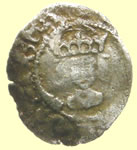 |
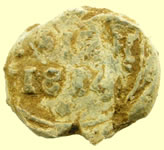 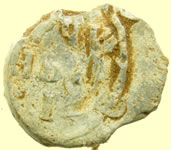 |
||||||||
1485 - 1509 Henry VII hammered silver half penny - Reverse cross fourchee - Type 3 single arched crown Obv HENRIC DI GRA REX Rev CIVI/TAS/LON/DON - London mint 0.32g,12.32mm |
1817 Russian lead bale seal |
||||||||
 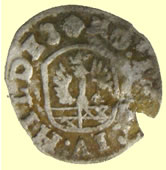 |
  |
||||||||
Continental hammered silver coin 0.66g,15.49mm HILDESHEIM - Free City, Billon 4 Pfennig, 1720. Obv.: City coat of arms, "MO:NO:CIV:HILDES" |
1634 Charles 1st hammered silver penny |
||||||||
  |
  |
||||||||
15** 16thc Elizabeth hammered silver groat fragment |
Medieval hammered silver groat fragment |
||||||||
 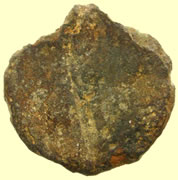 |
  |
||||||||
134 AD Hadrian Roman bronze coin |
1341 Edward III hammered silver florin penny - Cross 3 Obv EDWAR ANGL DNS HYB Rev CIVI/TAS/LON/DON |
||||||||
  |
|||||||||
1670's Charles II milled silver penny |
|||||||||
More finds posted on 2010 Sept finds page More finds posted on 2010 Oct finds page I More finds posted on 2010 Oct finds page II |
|||
 |





